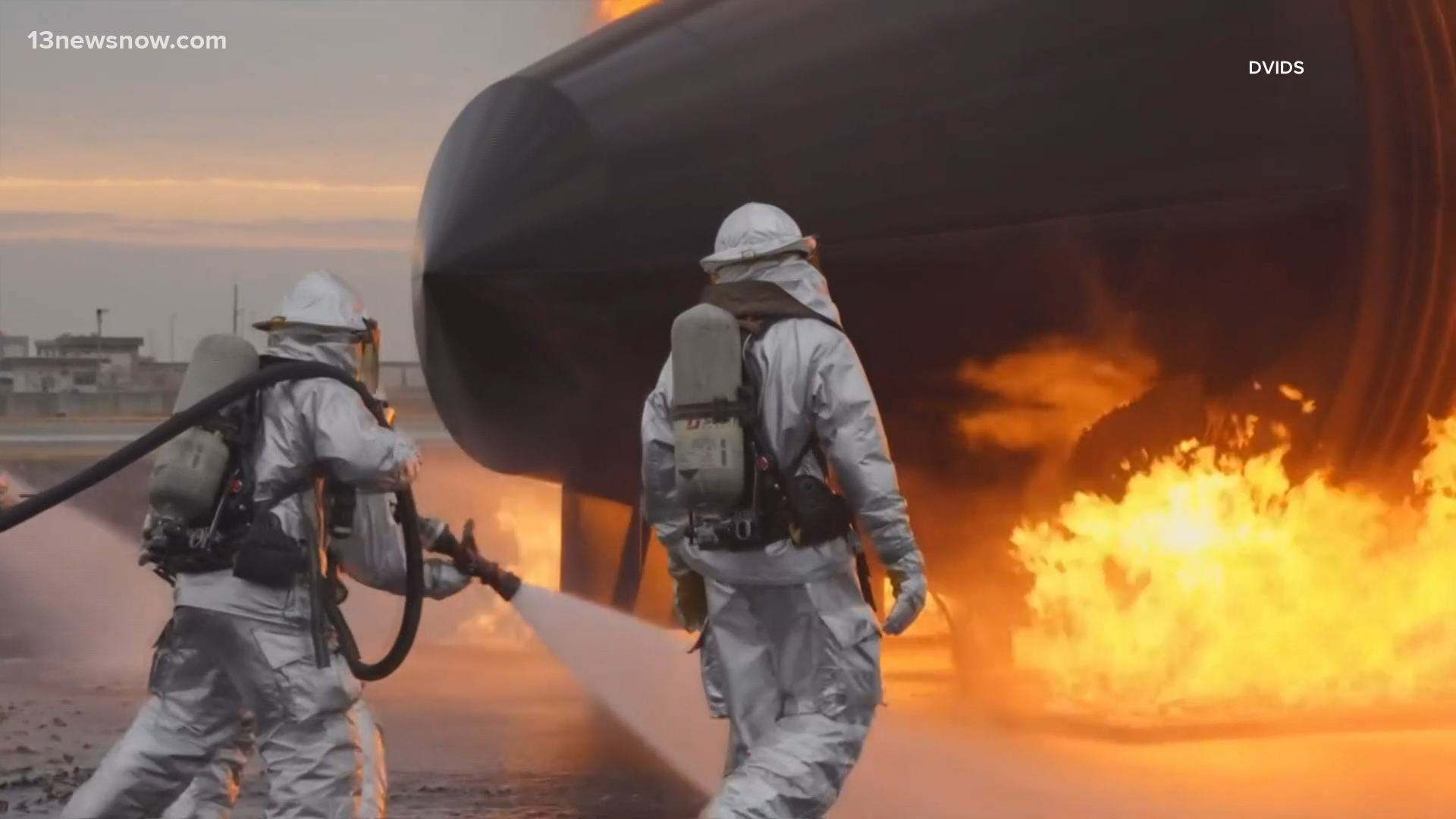NORFOLK, Va. — The Department of Defense (DOD) uses a specific type of firefighting foam known as "AFFF" in about 1,500 facilities and over 6,800 mobile assets worldwide to suppress fires. The foam is particularly effective in putting out aircraft fires.
But it contains a compound with the so-called "forever chemicals" -- poly-fluoroalkyl substances (PFAS) -- that can seep into groundwater, get into nearby drinking wells. PFAS can have adverse effects on human health, including harming fetal development, the thyroid and the immune system, and it may cause liver damage and testicular, kidney, and thyroid cancers.
Congress voted in 2020 to require the DOD to discontinue the use of the foam after October 1, 2024.
But a new report says that change may take more time.
The Government Accountability Office (GAO) reports that the DOD has identified challenges that are slowing the transition. They include a lack of a drop-in replacement, an estimated transition cost of more than $2.1 billion, and military firefighters not being fully trained in the use of fluorine-free foams.
The report says the DOD will likely seek waivers through October 1, 2026.
"We did find that that they were taking actions to move towards this elimination. It's just there are a number of challenges and they've got to overcome those," said GAO Defense Capabilities and Management team director Alissa Czyz in an interview on Wednesday with 13News Now.
Czyz said it's important that this problem is fixed.
"PFAS can get into groundwater and drinking water and has the potential of harmful health effects. So, DOD needs to take action on this."
The chemicals were discovered in groundwater around the Navy's Fentress Field in Chesapeake in 2016.
The Navy provided those residents with bottled water.
The City of Chesapeake is working to get those homes connected to the city water system.

